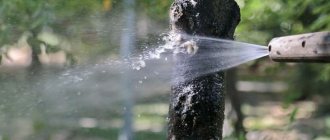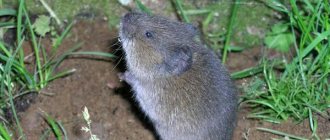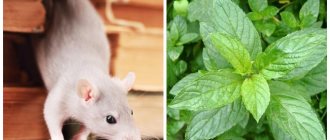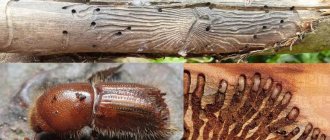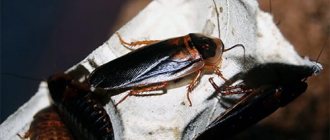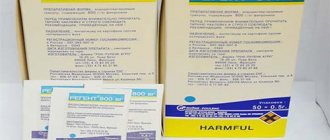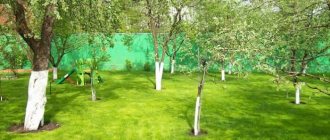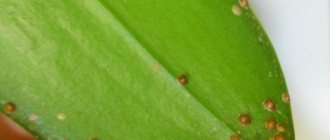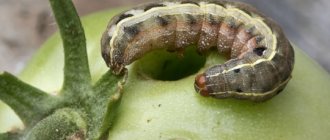Aphids, or plant louse as they are also called, are one of the dangerous sucking insects, the activity of which affects many garden and vegetable crops. Due to pest attacks, plant growth stops, they become depressed and often die. To save the harvest, it is necessary to regularly resort to preventive measures that will prevent the appearance of pests in the garden. To grow organic fruits and vegetables, it is preferable to use folk remedies. So, tobacco helps against aphids. Can be processed:
- fruit trees (including apple, pear, plum and cherry);
- roses;
- currant;
- cucumbers;
- tomatoes;
- pepper;
- cabbage;
- viburnum;
- dill;
- raspberries;
- houseplants;
What is tobacco infusion used for?
Tobacco is often used as a natural supplement. To make an infusion for this purpose, tobacco dust is used. As a rule, it remains after tobacco production as waste. It can be found on store shelves in gardening departments. Tobacco waste contains phosphorus, potassium and nitrogen. They are so necessary for plants for intensive growth.
Studies have shown that tobacco-based products do not contain hazardous substances and alkaloids that can harm the fruit.
The infusion is non-toxic, has a positive effect on microorganisms in the soil and nourishes the plant with minerals. Thanks to this, the yield increases significantly. This infusion can also be used to fertilize indoor plants. It is especially effective during transplantation for better adaptation.
An infusion of tobacco will also help against pests and parasites: aphids, caterpillars, leaf rollers and others. The product is non-toxic, does not penetrate deep into the plant and does not pollute the soil, unlike chemical insecticides.
Tobacco dust will help protect your garden from pests
Tobacco dust is a completely natural pest repellent that will not harm the garden ecosystem and will help you grow a clean crop without chemicals. We will tell you when and how to use it to treat various crops, what parasites tobacco dust will help get rid of, and what methods of using this substance are most effective at different stages of plant development.
Actinidia (lat. Actinidia)
Prefers partial shade. For plants to be effectively pollinated, there should be one “male” tree for every 5-10 “female” trees. A necessary condition for growth is that the root neck of the tree should not rise above the ground, it should be deepened by 2-3cm.
From pests
Tobacco infusion against pests is quite effective. To prepare the preparation, stems, dust and leaves are used. The main active ingredient is alkaloids. It will help get rid of such parasites as: aphids, copperheads, thrips, leaf roller caterpillars, cabbage moths, apple and fruit moths, onion flies, secretive moths, lacewings, moths, ringed silkworms, cruciferous flea beetles, spider mites, rapeseed and cherry sawfly larvae, whiteflies, slugs and even household moths.
Compound
- tobacco – 400 g;
- water – 10 l.
Preparation
- Grind the raw materials.
- To fill with water.
- Leave for 2 days.
- Squeeze out the liquid and strain through cheesecloth.
- Dilute with the same volume of water.
Used for pest-infected plants by spraying.
Spraying recommendations
For spraying with tobacco infusion to work, it is worth considering the following recommendations:
- before processing, liquid soap is added to the infusion at the rate of 40 g per 10 liters of water, which helps to better fix the product on the crops;
- try to spray the infusion when spraying along the tops of trees and bushes, because it is in this place that there is a high concentration of aphids;
- It is normal for plant leaves to change after treatment - a brown tint will be added due to the high concentration of the infusion.
Spraying plants with infusion and decoction of tobacco
Treating plantings with an infusion or decoction based on tobacco dust will help protect against leaf-boring pests.
Method for preparing the infusion:
- Dissolve 2 cups of the drug in 10 liters of hot water.
- Let it brew for two days, stirring occasionally.
- Filter the finished mixture, add water in a 1:2 ratio.
- For better adhesion of the drug to the leaves, pour in 1 tablespoon of liquid soap.
To achieve maximum effect, add 1 glass of sifted ash or onion peel to the infusion; the further preparation procedure is similar.
Method for preparing the decoction:
- Add half a glass of tobacco powder to a liter of water.
- Boil the mixture for 30 minutes; add water to the original volume.
- Leave the resulting broth for 24 hours in a dark place.
- To obtain a working solution, filter the broth, dilute it with water in a ratio of 1:2 and add liquid soap.
Twice treatment with a decoction with an interval of 7-10 days will help against aphids, bedbugs, white moth caterpillars, cutworms, and spider mites.
To combat carrot and onion flies, spray with infusion when planting onions, thinning carrot seedlings, and to combat apple psyllid (psyllids), leaf roller caterpillars, and sawflies, spraying is done after flowering and before harvesting (2 weeks before).
Spraying 2-3 times per season, at weekly intervals, helps protect plants from the Colorado potato beetle.
Spraying beet plantings with an infusion of tobacco dust with the addition of ash protects against the beet flea beetle, the frequency of application is 2-3 times with an interval of 8 days.
After processing, do not eat beet leaves!
From aphids
Despite the large assortment of home and store-bought remedies for parasites, tobacco infusions for aphids occupy one of the leading positions.
Compound
- tobacco dust – 400 g;
- water - 10 l;
- soap – 40 g.
Preparation
- Pour water over tobacco dust.
- Leave for a day.
- Stir several times.
- Strain through double cheesecloth.
- Add soap.
Gardeners advise spraying against aphids every 5-7 days to remove all pests. To improve and accelerate effectiveness, you can alternate preparations from different types of raw materials.
Wood ash
Helps against
cabbage mite, cabbage fly, codling moth,
and snails.
Wood ash
Dust the plants with dry ash or sprinkle the soil between the rows with it.
Pour 300 g of ash into 3 liters of boiling water, simmer over low heat for 20 minutes. Cool, strain, add to 10 liters.
Leave 300 g of ash in 10 liters of water for two days. Add 40 g of laundry soap for adhesion.
How to use it?
Dust cabbage after dew or after rain. Sprinkle ash on the soil between the rows to prevent cabbage flies. Spray fruit trees, cabbage, cucumbers, zucchini, and pumpkin with infusion or decoction.
Tobacco dust
From waste in the production of tobacco factories, packaged packets of tobacco dust are produced for sale. Thanks to the rich content, plants receive improved nutrition and soil activity increases. In addition to the fact that tobacco dust is used when digging the soil and planting crops by adding it to the ground, a common method of application is an infusion of tobacco dust.
Tobacco dust contains nicotine, which fights parasites during the growth of garden plants. An infusion of tobacco dust is useful for protecting tobacco, cabbage, fruits and berries and flowers.
Compound
- tobacco dust – 400 g;
- a bucket of water.
Preparation
- Fill the main component with water.
- Leave for at least a day.
- Stir occasionally.
- Strain through cheesecloth.
- Dilute with water 1:2.
- Add a little soap.
Apply immediately after preparation. Spray at least 2 times a day. Take a break for several days between procedures.
An infusion of tobacco dust works effectively against pests when used correctly:
- to combat copperhead, spray fruit trees during the period when buds appear;
- when removing aphids, treat with infusion by spraying at intervals of a week;
- to combat gooseberry moth and raspberry beetle larvae, carry out treatment during bud break;
- when spider mites appear, spraying is carried out immediately after identifying the pests, and again after 7 days;
- from fleas - all crops are treated once a month;
- for cabbage flies and onion hoverflies, treatment is carried out 2 times: in the first half of June and at the end of August.
TOBACCO SMOKE AGAINST PESTS
Tobacco smoke is also an effective remedy against harmful insects. It can not only repel, but also destroy garden pests. For fumigation, you need pure tobacco crumbs at the rate of 5 - 10 g of tobacco powder per 1 m3 of the room in which it will be carried out, or tobacco smoke bombs.
Typically, preventive fumigation is used against aphids, thrips, whiteflies, spider mites and other pests in an empty greenhouse two to three days before sowing or planting seedlings. To do this, a smoldering fire is lit on a brazier, in a barbecue, or in a special smoker, where tobacco crumbs are placed.
Processing time - 2 - 3 hours. Under no circumstances should you be in a fumigated room: the concentration of smoke in a tightly closed room is such that it can cause poisoning even in a heavy smoker. When the fumigator burns out, you need to wait a couple more hours, and then ventilate the plants in the greenhouse for several hours. You can also use fumigation against pests, but it is more convenient to do this with the help of a tobacco stick: it smolders, but does not burn, so a significant increase in temperature for vegetative plants is not threatens (although it is better to do this in cool weather or in the evening). The smoke screen penetrates into all corners of the greenhouse and envelops all parts of the plant, so not a single pest can hide from it.
Rodents also do not like tobacco smoke, so if mice have dug tunnels into greenhouses, then after fumigation they will get out of there. Well, as an additional bonus, when a tobacco stick burns, it releases carbon dioxide, which, as is known, promotes plant growth.
You can also use a tobacco stick in vegetable storage if there are pests there (of course, if all precautions are taken).
The fumigation method can also be used in the garden to repel harmful insects on fruit trees. It must be carried out before flowering, so as not to scare away bees and other pollinating insects along with pests. In addition, it is important to guess the direction of the wind: the main thing is that the tobacco smoke does not go towards the house or neighbors, and they do not think that you are smoking them.
Angry and bitter
Both tobacco and shag can be grown and dried yourself, but this process is long, troublesome and not healthy. Therefore, it is easier to use ready-made drugs, especially since the choice is now quite wide.
The retail chain offers us tobacco crumbs and shag in pure form and in various mixtures and mixtures. Such, for example, as “Tabazol” and “Tabagor”
, this is not an evil and bitter tobacco, as the name might suggest, but a mixture of tobacco with ash and mustard.
Mixtures of tobacco with lime and soda and even tobacco soap are sold
. But of course, it is not difficult to prepare such mixtures yourself by mixing all of the above substances with tobacco in a 1:1 ratio. As practice shows, the effect of tobacco dust on pests in mixtures and tinctures and decoctions prepared from them is enhanced.
IMPORTANT TO REMEMBER!
Plant poison is also poison, and it can be dangerous not only for harmful, but also for beneficial insects. And of course – for humans: tobacco dust can cause an allergic reaction and poisoning. Therefore, when working with it, it is necessary to take precautions.
Carefully study the instructions attached to preparations with tobacco crumbs, and, most importantly, follow them scrupulously.
When mixing tobacco dust with lime, mustard, and ash, take care to protect your respiratory tract by wearing a mask or respirator.
When spraying or fumigating plants, work in closed clothing, a mask, and gloves.
Do not use tobacco preparations too often and in large doses, alternate them with other natural insecticidal agents, and use such protective and preventive measures as attracting insect predators to the garden, mixed plantings, crop rotation, and planting phytoncidal plants.
Related link: Do-it-yourself natural pest repellents - recipes
Precautionary measures
Despite the fact that tobacco infusion against pests is non-toxic, it is worth adhering to some safety measures. Since careless use can cause health problems, you must:
- wear a cotton-gauze bandage to protect the respiratory tract;
- rubber gloves are used to protect the skin of the hands;
- eye protection glasses;
- If the drug gets on the skin and mucous membranes of the eyes or mouth, rinse thoroughly under running water.
- while carrying out work to get rid of pests, you must not smoke, drink or eat food;
- at the end of the procedure, wash your hands and face well with soap;
- Children, pregnant and lactating women, as well as people with allergies are not allowed to work with the infusion;
- preparations of dried raw materials for the drug must be done with gloves and scissors;
- store the prepared raw materials with signed labels, because not only fresh tobacco is used to make the infusion, but also dried tobacco;
- The dishes used for making the infusion must be washed with a solution of soda ash or wood ash, and then rinsed with plain water.
Thanks to tobacco infusion, you can get rid of almost any harmful insect for home crops. It is important that this method is not only effective, but also economical.
Vinegar
It will help get rid of the cruciferous flea beetle.
will save you from the codling moth.
Add 2 tbsp. spoons of vinegar essence in 8 liters of water immediately before processing. Spray radish and cabbage seedlings generously.
Dilute 200 g of apple cider vinegar fermented for 3-4 days with 3 liters of water.
How to use it?
At a height of 1.5-2 m, hang such jars with such a solution on the branches of an apple tree. The codling moth is collected in jars. Change traps once a week.
How to use tobacco powder to protect plants
Tobacco powder can be used on almost any crop to care for your plants. It is applied directly to the soil every three months. You can start feeding tobacco at any time of the year when the land is in the public domain.
In all cases, it is necessary to water the soil abundantly after application. Remember to always sprinkle tobacco powder on the soil, not the leaves or flowers!
This product leaves no residue, does not attract insects, has no lingering odor, is non-toxic and safe to use. It is better not to mix tobacco powder with other products. (Source: www.royalgarden.com).
Source
Precautions for use
The use of tobacco in a summer cottage requires special caution, since nicotine has a negative effect not only on insects, but also on the human body.
It can cause a severe allergic reaction or serious intoxication. Therefore, work with tobacco is carried out in compliance with all safety measures:
Tobacco dust is a multifunctional product of natural origin that is widely used in gardening and gardening. This substance helps saturate fertile soil with nutrients. Provides full growth of garden crops and increased productivity. Tobacco effectively fights insect pests both in greenhouses and in open ground.
Source

